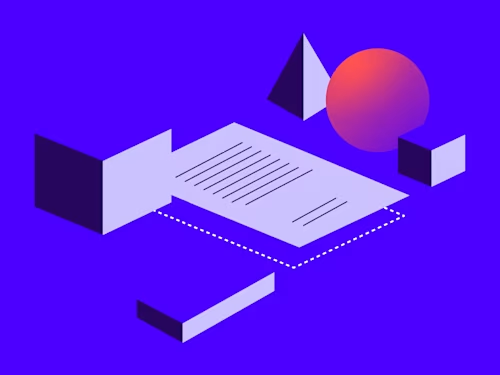
Day in the life of procurement
Too often, procurement teams are slowed down by manual agreement processes. Here are four procurement steps that are ripe for transformation.

Agreements are essential to the procurement process. They enable the flow of vital goods and services between vendors and companies. They detail delivery and payment information. They establish long-term relationships and keep the wheels of business in motion.
Given their critical role, why are so many procurement teams still bogged down in manual processes? Why do 84% of supply chain officers say their biggest hurdle is the lack of visibility into contracts? And a further 46% of procurement professionals have to delay projects due to inadequate agreement processes?
Let’s take a look at the problem with manual procurement processes, and then explore four key moments in the procurement journey that can easily be digitised to deliver better results.
The problem with manual procurement workflows
Day to day, procurement teams juggle a wide range of tasks. One moment, they’re sifting through offers to find the best goods and services at the right price. The next, they may be doing due diligence on possible vendors. They may need to negotiate a contract or check supply chain resilience. All this, while keeping internal stakeholders happy.
While trying to keep all these balls in the air, they can also get thrown off balance by macroeconomic forces like supply chain uncertainty and rising costs.
Worse still, many are trying to juggle one-handed, while the other hand is busy sifting through manual, paper-based agreements and contracts. They may need to search through shared spreadsheets to find supplier information. Or dig through an email chain to find the latest version of a redlined contract during negotiations. Version control issues abound. Errors mount. Time is wasted.
Imagine how much quicker and easier they could juggle multiple tasks if all agreement data and workflows were centralised on one simple system?
Optimising agreements leads to procurement success
Streamlining the agreement processes by digitising previously manual steps can help eliminate these pain points. And there are four crucial stages of the procurement journey that can really benefit from going digital.
1. Sourcing
Pinpointing the right vendors to provide high-quality goods and services is critical for any procurement team. However, it’s not enough to just discover the best vendors. You also need to convince them to sign a contract. By streamlining paperwork at this stage, you send a clear signal to potential vendors that you’re easy to do business with. Plus, if it’s quick and easy to generate, send, sign and manage contracts, the agreement process will improve for everyone, including internal stakeholders who will deal with those suppliers directly.
2. Purchasing
Nothing slows down a purchase more than manual processes. Transferring data from one system to another by hand takes a long time and can lead to errors or duplicate work. When it comes to PO approvals, you want to reduce or eliminate manual processes as much as possible. By digitising, you can automatically transfer data between integrated systems, enabling predefined routing, automating and streamlining approval workflows to ensure that purchases happen at the speed your business requires.
3. Contract management
Procurement teams often lack visibility into the plethora of supplier contracts across the business, which means they have to tackle contracts individually or as one-off agreements. This can make it hard to manage cost, quality and compliance; not to mention the fact that it’s unsustainable as the organisation scales. Instead, a centralised system of agreement provides full visibility and allows the procurement team to spend less time updating stakeholders. It also gives the team easy access to standardised clauses and historical agreements, helping to get agreements completed faster, while reducing cost and risk.
4. Invoicing and payments
A modern system of agreement automates the processes necessary to complete invoicing and collect payment across credit requests, financing requests and more. When integrations can share data between systems — and when automation can manage repetitive steps — the process moves faster, reduces costs and increases accuracy. Plus, it frees up procurement teams’ time to focus on building relationships, instead of getting bogged down in tedious admin.
Starting your modernisation journey
If you’re thinking about introducing a modern system of agreement to your procurement team, we recommend you focus on five key principles:
Automate manual processes to eliminate human errors – not the human touch
Empower stakeholders in the agreement process with visibility into the audit trail
Focus on ease of use and remove barriers to adoption
Leverage existing investments, but close gaps between individual tools
Enable full regulatory compliance
With these five things in mind, you’re ready to hit the ground running with your first use case for digitising procurement workflows. Start small, choosing one procurement use case that will deliver immediate value - such as a process that brings in the most revenue or one with the highest volume of agreements or transactions. Then, roll out across other systems and use cases and watch the time and cost savings pour in.
Remember, digitisation of your agreements is a journey. If you need support along the way, Docusign is here to help.
Related posts
Docusign IAM is the agreement platform your business needs


